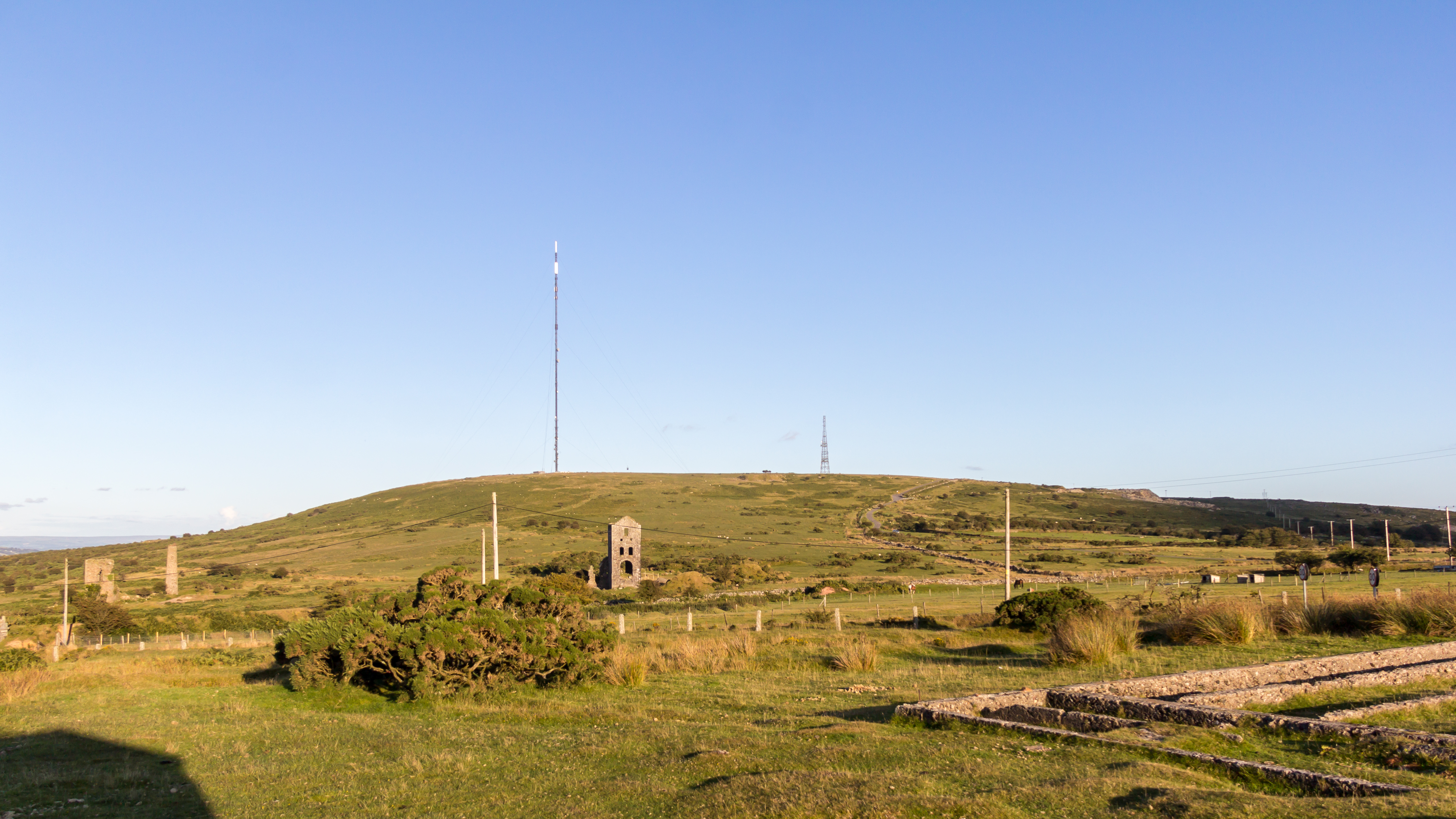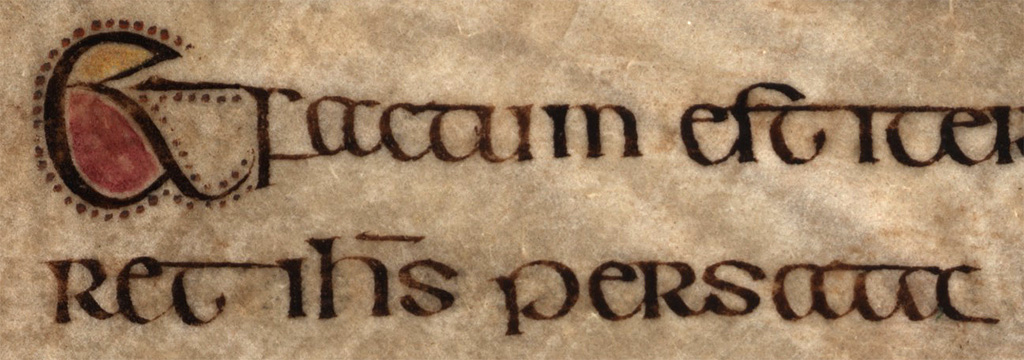|
Doniert Stone
King Doniert's Stone ( kw, Menkov Donyerth Ruw) consists of two pieces of a decorated 9th-century cross, near St Cleer on Bodmin Moor, Cornwall. The inscription is believed to commemorate Donyarth, Dungarth, Kingdom of Cornwall, King of Cornwall, who died around 875. History In the 5th century, Christianity was first brought to Cornwall by monks from Wales and Ireland. The early missionaries are believed to have erected wooden crosses to show places in which they had won victories for Christ. In time these places became sanctified and the wooden crosses were replaced by stone ones. The site The site consists of the remains of two granite cross-shaft fragments dating from the 9th–11th century, and an underground passage and cross-shaped chamber below the crosses, thought to be either the remains of mining in Cornwall and Devon, tin workings or a possible oratory (worship), oratory. The northern cross, the Doniert Stone, is high with panels of interlace (art), interlace decorati ... [...More Info...] [...Related Items...] OR: [Wikipedia] [Google] [Baidu] |
Annales Cambriae
The (Latin for ''Annals of Wales'') is the title given to a complex of Latin chronicles compiled or derived from diverse sources at St David's in Dyfed, Wales. The earliest is a 12th-century presumed copy of a mid-10th-century original; later editions were compiled in the 13th century. Despite the name, the record not only events in Wales, but also events in Ireland, Cornwall, England, Scotland and sometimes further afield, though the focus of the events recorded especially in the later two-thirds of the text is Wales. Sources The principal versions of appear in four manuscripts: * A: London, British Library, Harley MS 3859, folios 190r–193r. * B: London (Kew), National Archives, MS. E.164/1 (K.R. Misc. Books, Series I) pp. 2–26 * C: London, British Library, MS. Cotton Domitian A.i, folios 138r–155r * D: Exeter, Cathedral Library, MS. 3514, pp. 523–28, the . * E: ''ibid.'', pp. 507–19, the . *A is written in a hand of about 1100–1130 AD, and inser ... [...More Info...] [...Related Items...] OR: [Wikipedia] [Google] [Baidu] |
Monuments And Memorials In Cornwall
A monument is a type of structure that was explicitly created to commemorate a person or event, or which has become relevant to a social group as a part of their remembrance of historic times or cultural heritage, due to its artistic, historical, political, technical or architectural importance. Some of the first monuments were dolmens or menhirs, megalithic constructions built for religious or funerary purposes. Examples of monuments include statues, (war) memorials, historical buildings, archaeological sites, and cultural assets. If there is a public interest in its preservation, a monument can for example be listed as a UNESCO World Heritage Site. Etymology It is believed that the origin of the word "monument" comes from the Greek ''mnemosynon'' and the Latin ''moneo'', ''monere'', which means 'to remind', 'to advise' or 'to warn', however, it is also believed that the word monument originates from an Albanian word 'mani men' which in Albanian language means 'rememb ... [...More Info...] [...Related Items...] OR: [Wikipedia] [Google] [Baidu] |
History Of Cornwall
The history of Cornwall goes back to the Paleolithic, but in this period Cornwall only had sporadic visits by groups of humans. Continuous occupation started around 10,000 years ago after the end of the last ice age. When recorded history started in the first century BCE, the spoken language was Common Brittonic, and that would develop into Southwestern Brittonic and then the Cornish language. Cornwall was part of the territory of the tribe of the Dumnonii that included modern-day Devon and parts of Somerset. After a period of Roman rule, Cornwall reverted to rule by independent Romano-British leaders and continued to have a close relationship with Brittany and Wales as well as southern Ireland, which neighboured across the Celtic Sea. After the collapse of Dumnonia, the remaining territory of Cornwall came into conflict with neighbouring Wessex. By the middle of the ninth century, Cornwall had fallen under the control of Wessex, but it kept its own culture. In ... [...More Info...] [...Related Items...] OR: [Wikipedia] [Google] [Baidu] |
High Crosses In England
High may refer to: Science and technology * Height * High (atmospheric), a high-pressure area * High (computability), a quality of a Turing degree, in computability theory * High (tectonics), in geology an area where relative tectonic uplift took or takes place * Substance intoxication, also known by the slang description "being high" * Sugar high, a misconception about the supposed psychological effects of sucrose Music Performers * High (musical group), a 1974–1990 Indian rock group * The High, an English rock band formed in 1989 Albums * ''High'' (The Blue Nile album) or the title song, 2004 * ''High'' (Flotsam and Jetsam album), 1997 * ''High'' (New Model Army album) or the title song, 2007 * ''High'' (Royal Headache album) or the title song, 2015 * ''High'' (EP), by Jarryd James, or the title song, 2016 Songs * "High" (Alison Wonderland song), 2018 * "High" (The Chainsmokers song), 2022 * "High" (The Cure song), 1992 * "High" (David Hallyday song), 1988 * ... [...More Info...] [...Related Items...] OR: [Wikipedia] [Google] [Baidu] |
English Heritage Sites In Cornwall
English usually refers to: * English language * English people English may also refer to: Peoples, culture, and language * ''English'', an adjective for something of, from, or related to England ** English national identity, an identity and common culture ** English language in England, a variant of the English language spoken in England * English languages (other) * English studies, the study of English language and literature * ''English'', an Amish term for non-Amish, regardless of ethnicity Individuals * English (surname), a list of notable people with the surname ''English'' * People with the given name ** English McConnell (1882–1928), Irish footballer ** English Fisher (1928–2011), American boxing coach ** English Gardner (b. 1992), American track and field sprinter Places United States * English, Indiana, a town * English, Kentucky, an unincorporated community * English, Brazoria County, Texas, an unincorporated community ... [...More Info...] [...Related Items...] OR: [Wikipedia] [Google] [Baidu] |
Archaeological Sites In Cornwall
Archaeology or archeology is the scientific study of human activity through the recovery and analysis of material culture. The archaeological record consists of artifacts, architecture, biofacts or ecofacts, sites, and cultural landscapes. Archaeology can be considered both a social science and a branch of the humanities. It is usually considered an independent academic discipline, but may also be classified as part of anthropology (in North America – the four-field approach), history or geography. Archaeologists study human prehistory and history, from the development of the first stone tools at Lomekwi in East Africa 3.3 million years ago up until recent decades. Archaeology is distinct from palaeontology, which is the study of fossil remains. Archaeology is particularly important for learning about prehistoric societies, for which, by definition, there are no written records. Prehistory includes over 99% of the human past, from the Paleolithic until ... [...More Info...] [...Related Items...] OR: [Wikipedia] [Google] [Baidu] |
Pillar Of Eliseg
The Pillar of Eliseg – also known as Elise's Pillar or Croes Elisedd in Welsh – stands near Valle Crucis Abbey, Denbighshire, Wales rid reference It was erected by Cyngen ap Cadell (died 855), king of Powys in honour of his great-grandfather Elisedd ap Gwylog. The form ''Eliseg'' found on the pillar is assumed to be a mistake by the carver of the inscription. History Whilst the pillar itself dates to the 9th century, the large artificial mound is thought to be significantly older, possibly prehistoric. Certainly the mound can be dated to the Bronze Age. Inscription The Latin inscription consisted of some thirty-one lines of insular script. It not only mentioned several individuals described in the '' Historia Britonum'', but also complemented the information presented in that text. Considerable portions of the original inscription were read by the antiquarian Edward Lluyd in 1696 and his transcript seems to have been remarkably accurate according to Robert Vermaat of '' ... [...More Info...] [...Related Items...] OR: [Wikipedia] [Google] [Baidu] |
English Heritage
English Heritage (officially the English Heritage Trust) is a charity that manages over 400 historic monuments, buildings and places. These include prehistoric sites, medieval castles, Roman forts and country houses. The charity states that it uses these properties to "bring the story of England to life for over 10 million people each year". Within its portfolio are Stonehenge, Dover Castle, Tintagel Castle and the best preserved parts of Hadrian's Wall. English Heritage also manages the London Blue Plaque scheme, which links influential historical figures to particular buildings. When originally formed in 1983, English Heritage was the operating name of an executive non-departmental public body of the British Government, officially titled the Historic Buildings and Monuments Commission for England, that ran the national system of heritage protection and managed a range of historic properties. It was created to combine the roles of existing bodies that had emerged from a lo ... [...More Info...] [...Related Items...] OR: [Wikipedia] [Google] [Baidu] |
Cornwall Heritage Trust
The Cornwall Heritage Trust (CHT) is an organisation which owns and manages historic sites in Cornwall, UK. It was founded in 1985. List of managed sites The Trust owns and manages a number of sites: *Trevanion Culverhouse * * * Treffry Viaduct * Dupath Well * [...More Info...] [...Related Items...] OR: [Wikipedia] [Google] [Baidu] |
Caradon Hill
Caradon Hill ( kw, Bre Garn) is on Bodmin Moor in the former Caradon district of Cornwall, England, United Kingdom. The summit is above mean sea level. Caradon Hill is on the southeastern edge of the moor; it is between the villages of Minions (northwest), Upton Cross (northeast), Pensilva (southeast) and Darite (southwest). The hill was once famous for its copper mines but these are now closed. The South Caradon Copper Mine, 1 km to the SW of the transmitter, was the biggest copper mine in the UK in its heyday in the second half of the 19th century. Other disused copper and tin mines are scattered around the base of the hill, including the Wheal Phoenix, well known among mineral collectors. The ruins of the Prince of Wales engine house are prominent at Wheal Phoenix. at [...More Info...] [...Related Items...] OR: [Wikipedia] [Google] [Baidu] |
Insular Script
Insular script was a medieval script system originating from Ireland that spread to Anglo-Saxon England and continental Europe under the influence of Irish Christianity. Irish missionaries took the script to continental Europe, where they founded monasteries such as Bobbio. The scripts were also used in monasteries like Fulda, which were influenced by English missionaries. They are associated with Insular art, of which most surviving examples are illuminated manuscripts. It greatly influenced Irish orthography and modern Gaelic scripts in handwriting and typefaces. Insular script comprised a diverse family of scripts used for different functions. At the top of the hierarchy was the Insular half-uncial (or "Insular majuscule"), used for important documents and sacred text. The full uncial, in a version called "English uncial", was used in some English centres. Then "in descending order of formality and increased speed of writing" came "set minuscule", "cursive minuscule ... [...More Info...] [...Related Items...] OR: [Wikipedia] [Google] [Baidu] |


.jpg)

.jpg)

